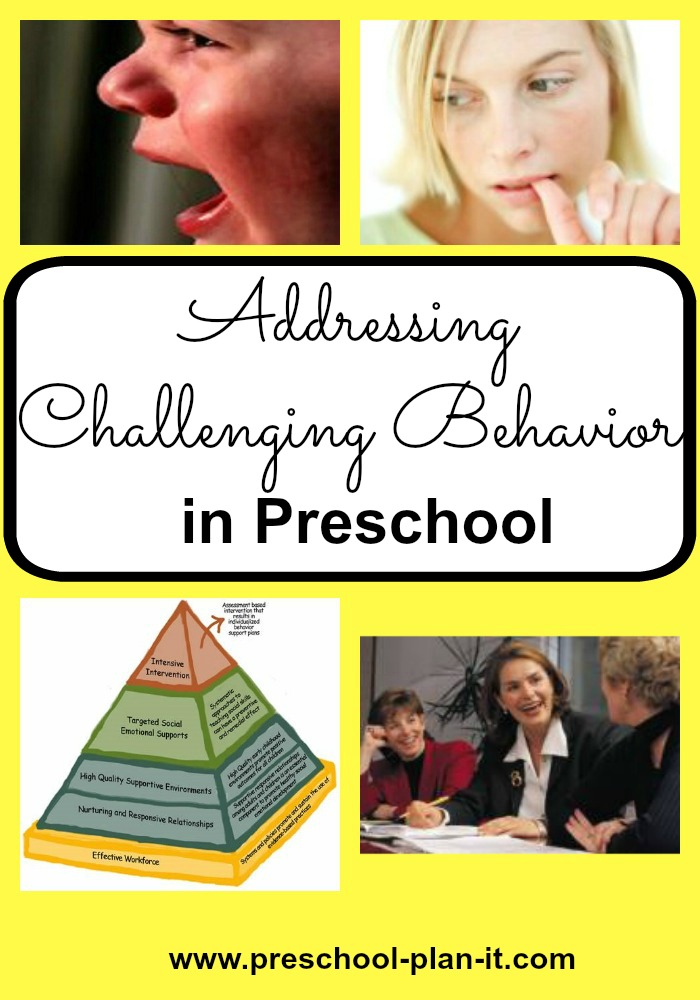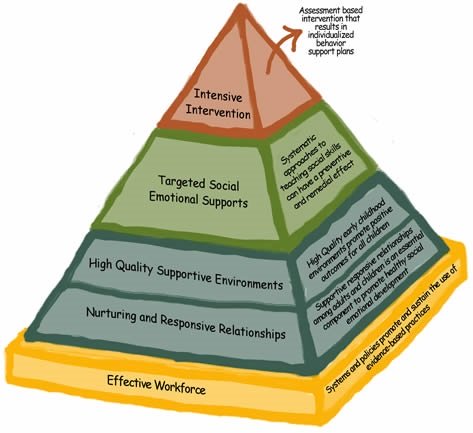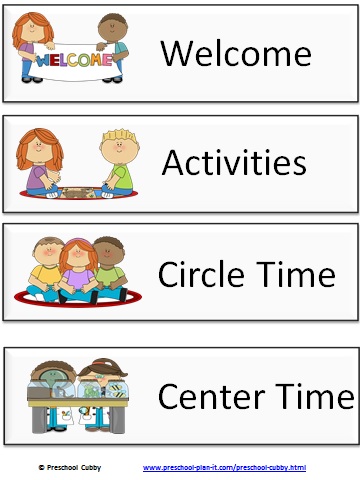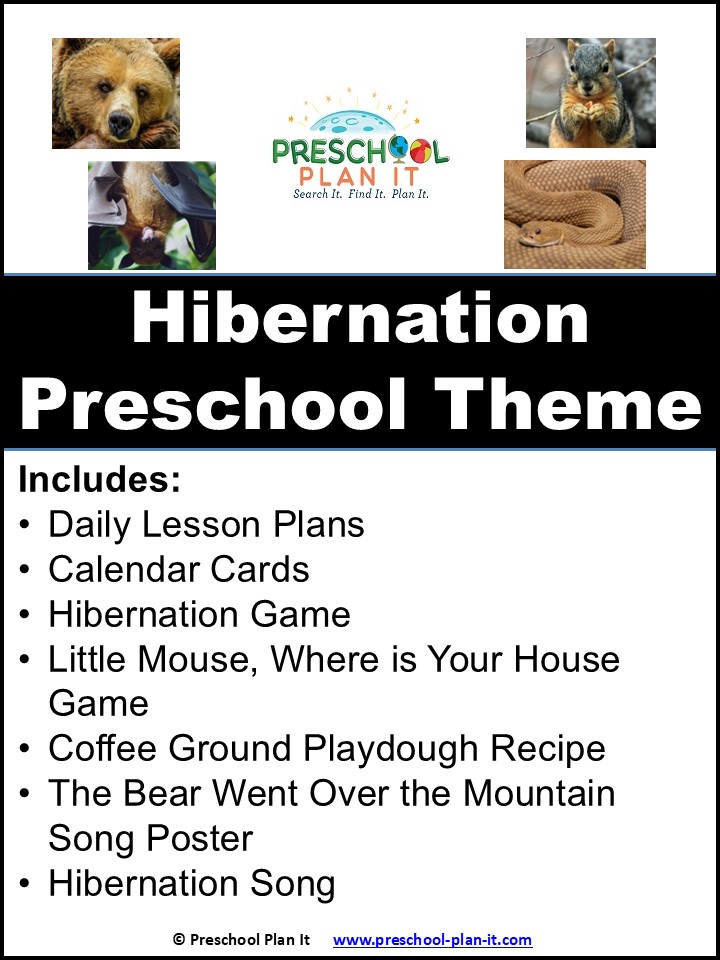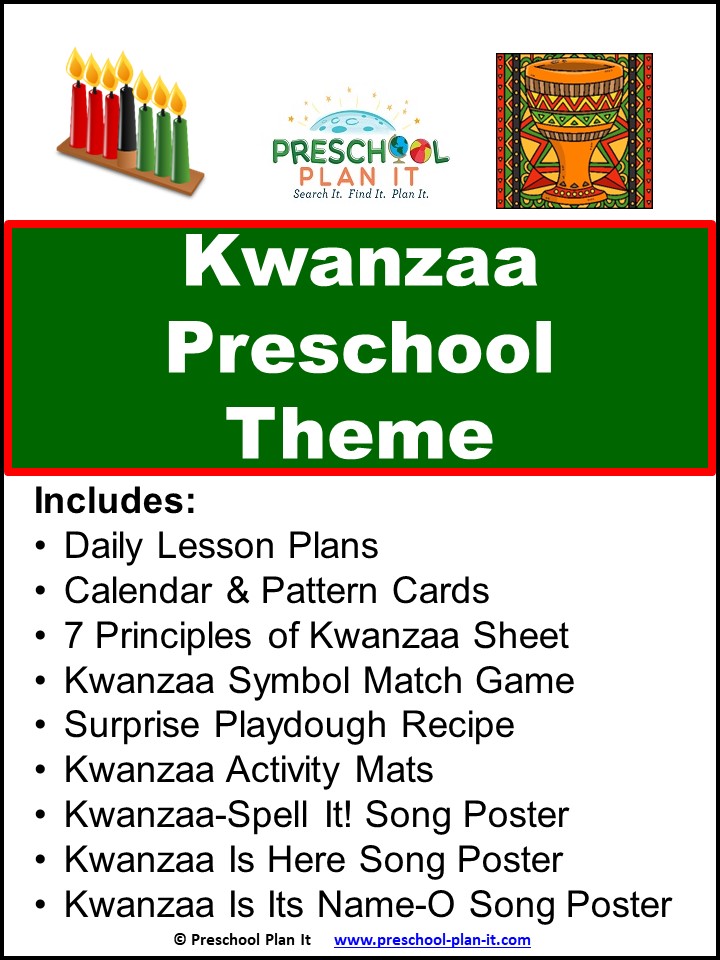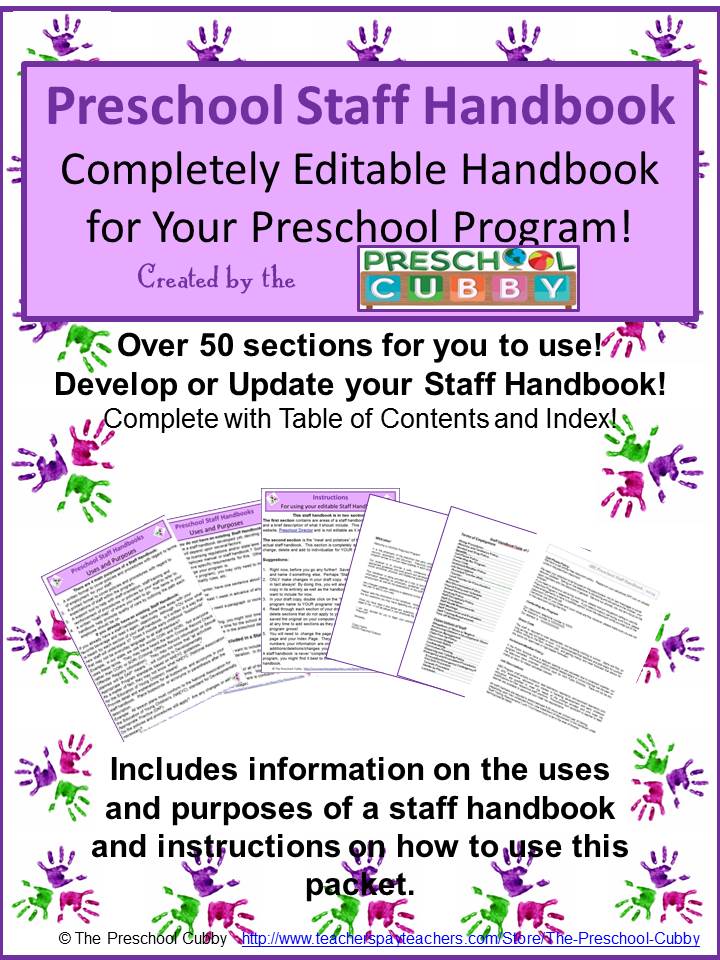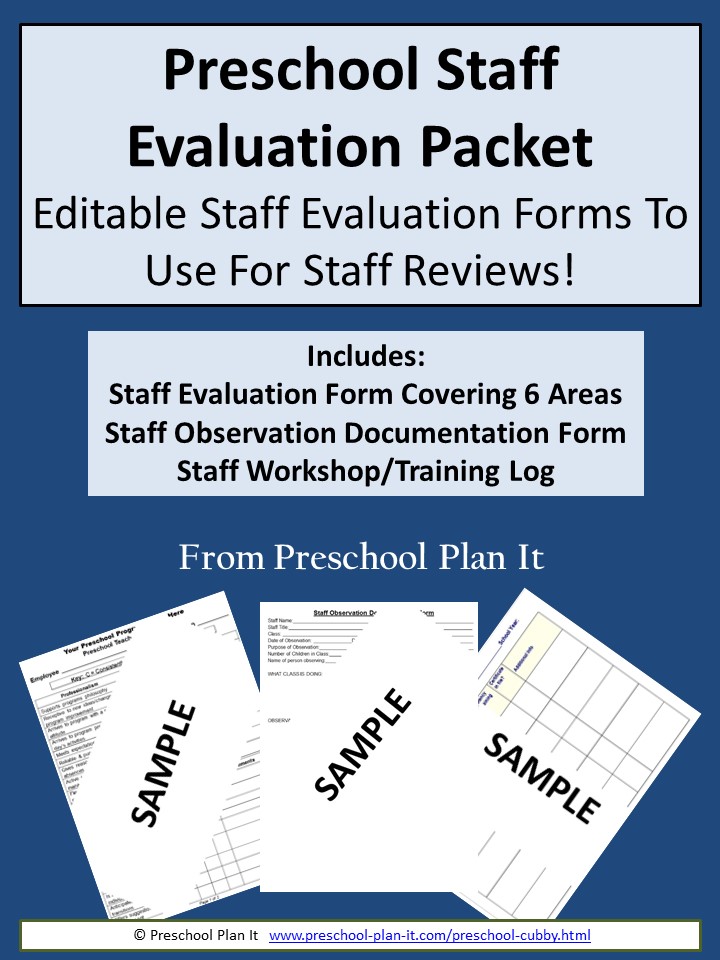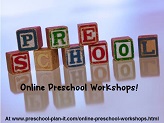- Theme Packs
- Themes
-
Preschool Planning
- Preschool Teachers
Challenging Preschool Behavior:
What is YOUR role and Responsibility in it......and, are we unintentionally escalating the behavior?

How to handle challenging behaviors is one of the top questions I'm asked about.
And, we can all understand why!!
We have many children in our classroom. Within our group of children, we have many varying levels of growth and development. This creates a room full of challenging behaviors that we need to work with daily:
- That chronological five-year-old with more challenging behavior than our just-turned three year olds!
- That any aged preschooler who displays challenging behaviors daily and we are at a loss at how to get them to behave better.....or.....to at least listen!
- That moment when we think we are failing because we can't get them to stop, regardless of what we've tried.
What's a teacher to do?
Dealing with challenging behavior in preschool children can be a daunting task.
Coping strategies are what is needed: Coping strategies to help the children AND coping strategies to help yourself!
Challenging Preschool Behavior Coping Strategies for YOU!
Before we can "guide", "manage", "discipline" or "modify" behavior, we need really need two things:
1. Be Knowledgeable
We need to be knowledgeable in appropriate expectations for the ages that we serve and, therefore, knowing what might trigger negative behaviors in our group.
Knowing about sound preschool growth and development is the only way we can have appropriate expectations. If you have never taken a formal class in this, I strongly urge you to do so--immediately.
Without this knowledge, you may be planning your curriculum with activities that are beyond your students' abilities causing frustration for them, and therefore- behavior issues.
You won't know if your activities are appropriate or not if you are not trained in this very important area of growth and development.
Check out your local college for classes or check with your Director or Administrator to develop a plan to gain this training.
2. We need to be aware of OUR OWN TRIGGERS!
Yes, how we think about certain behaviors determines how we react. Our reactions determine how well, or how poorly, the situation is handled.
We need to remember this quote from L. R. Knowst:
"When little people are overwhelmed by big emotions,
it's our job to share our calm, not to join their chaos."I know! I know! This is not what comes to mind when a storm's a brewin' in the preschool classroom!
However, it is in the midst of that storm that we need MOST to remember that quote!
Challenging Preschool Behavior Strategies To Help The Children
When we first start teaching we are so excited and pretty much on fire with all the awesome activities we've learned and want to share with the children.
And then we learn the difference between textbook curriculum and classroom behavior
Before we can address challenging preschool behavior in our children, it is necessary to look at many areas first.
Some areas to look at are the classroom environment and the classroom schedule.
These areas should be planned so that they meet the developmental needs of the children in the classroom.
We also need to look at what we can do to intervene appropriately.
We need to look at what happens before, during and after a negative behavior.
It's a lot to consider, for sure, but well worth----and imperative----to learn about.
The Pyramid Model for addressing behavior issues in early childhood classrooms, addresses these areas and more.
The Pyramid Model for Challenging Behavior
 The Pyramid Model for Challenging Behavior
The Pyramid Model for Challenging BehaviorAn appropriate schedule, physical environment, and nurturing interactions will create an excellent foundation for the base of the pyramid. Most research-based early childhood curricula plus a well trained staff will supply all of these factors.
The physical environment can make or break the behavior of your children. If you spend the majority of your day redirecting children, reminding them to use their "walking feet" or "indoor voices", you may have a classroom set up problem!
A quality early childhood classroom has an underlying structure that will support appropriate behaviors in young children. Monitor your classroom. If children are running around the room you may need to see if the furniture arrangement could be adjusted to eliminate runways.
If children are fighting in one center and not another you can limit the number of children in each area or make a particular area bigger. Instead of focusing on those "defiant" children ask yourself: what can you do differently to address the issues (remember the focus of the video earlier)?
If an area suddenly became popular I just wheeled the furniture back a little to make that center bigger. In any case, be flexible with your schedule and physical environment.
The Pyramid Model applies a tiered approach: Foundation, Supports, Prevention and Intervention.
Challenging Preschool Behavior:
The Pyramid Model Tier 1: FoundationThe base of the pyramid deals with promotion of appropriate social and emotional development for the general population in an early childhood setting. It is necessary to start at the base of the pyramid and work your way up.
The Foundation of the pyramid is the basis of all the practices in the pyramid--the systems and policies necessary to ensure a workforce able to adopt and sustain these evidence-based practices.
If children are not becoming involved in play but constantly moving from center to center look at two things:
- Is play time long enough? Children need a minimum of forty-five minutes to get involved in play. (An hour is even better)
- Look at the available materials. Do the available materials match the needs and interests of the children?
Challenging Preschool Behavior:
The Pyramid Model Tier 2: SupportsThis second level of the pyramid deals with Universal supports for all children through nurturing and responsive relationships and high quality environments. It addresses the needs of those children who may be at risk of challenging behavior. These children need a little more guidance than the group as a whole.
These children may need extra warnings before transitions, visuals such as lines or footsteps on the floor showing them where to line up.
These children also need to know what happens throughout the day. A picture schedule is great for this as it gives the children an idea of what happens next in a visual format. If you don't already have a picture schedule available for children to "read", I have created one that is available here.
In addition, a couple of overall, explicit rules--ones that can cover most any situation--should be established at the beginning of the school year. These are rules that are expected from everyone in your classroom, including the adults such as "Be Safe" and "Be Respectful". Again, use pictures in addition to words for your preschoolers to read.
These rules would be referred to when addressing specific situations such as "Feet on the floor please--let's be safe." Apply them to yourself as well. Let the children know, for example, that you are putting a cover on your coffee cup because it is a little warm and you need to be safe. You can also talk about these rules in general during conversations to help all children remember them, and especially those children needing extra support.
Challenging Preschool Behavior:
The Pyramid Model Tier 3: PreventionThis 3rd tier of the pyramid is all about Prevention.
It represents practices that are targeted social emotional strategies to prevent problems.
You may want to use a social/emotional curriculum in addition to the theme-based or other curriculum you have chosen for your program.
At this level you will want to actually teach social/emotional skills.
Use books, emotion posters, puppets, etc. to teach about feelings, empathy, and anger management.
It is best not to single children out for the more intense teaching but make sure they are included in the presentations as much as possible.
One example is how to participate in conversation with peers.
Quite often we find that challenging preschool behavior happens during large group or Circle time during conversations.
Children don't yet understand or know how to take turns in conversation.
As a matter of fact, there are many adults who have not yet mastered this skill! ;)
We posted Circle Time Conversation Rules poster in the area we had our large group meetings as a visual reminder about how to practice conversations so that everyone has a chance to talk to the group.
The rules are: Eyes are on the person who is talking; Ears are listening to the person talking. Voices are quiet.
PLEASE NOTE: These rules are NOT meant to be applied to Circle Time as a whole!
Too often I see classrooms who use rules such as these and expect them to be applied throughout Circle Time as in: The children are quiet, listening and looking at the teacher....the entire Circle Time.
This is unreasonable and age inappropriate!
It goes back to expecting our children to sit and listen while we impart all of our knowledge into their brains without them participating!
But I digress.......you can read more about appropriate circle time strategies here.
Challenging Preschool Behavior:
The Pyramid Model Tier 4: InterventionAt this fourth and top level of the pyramid we find Interventions. The tools used here are very focused on an individual and very intense in nature. Parents and teachers should form a team to assess the challenging behavior. They will gather information using observations. They will also use a number of more formal devices for gathering information about the behavior.
After you have had a chance to gather as much information as possible, the team will meet to create a behavior plan. As a team, you will discuss setting events which would include things like: a child's health, family problems such as divorce or death in the family, or lack of sleep.
They will also talk about antecedents to the challenging behavior in question:
- What was the behavior?
- What happened just before the challenging behavior?
- What happened (describing the situation in detail)
- Then how did other children react?
- How did the teachers or parents react?
- What did the child gain from the behavior?
You may start to see some patterns surrounding the behavior.
Behavior is always meant to communicate something. What is the child trying to tell you? Does she want or need something? Is she trying to avoid something?
At this point you will use positive behavior support to address the behavior, the goal behind the behavior and the purpose of this behavior. Once you've determined this, you can address it in a variety of ways:
- Determine its triggers
- Brainstorm ideas with the team on how to prevent the behavior
- Review the activities, adult expectations and/or schedule to see if they match this child's level of development.
- Brainstorm some replacement behaviors or coping skills you can introduce to the child to help him/her succeed in that situation in the future.
- How and when will you (the teaching team) and the parents teach these replacement behaviors?
- How can you best support the new behaviors?
- Are you giving little if any attention to the challenging behavior?

The team approach is necessary because everyone on the team has valuable input.
All team members will need to agree on the components of the behavior plan in order for the plan to work.
Give the plan plenty of time and be devoted to following the plan.
Every time an adult doesn't have time to follow through on the plan you will basically be starting over.
Don't forget that we all backslide occasionally so don't be discouraged.
Monitor the challenging behavior over time. You may find that the behavior has decreased even though it may not seem like it.
If you have been addressing the issues diligently according to the plan and you feel that you have given it plenty of time to work, you may need to write a new plan.
You can get more in depth information on the topic of challenging behaviors by visiting the Center for Social and Emotional Foundations for Early Learning (CSEFEL).
Here is the paraphrase of something a teacher once shared and definitely something to think about:
If children don't know how to read, we teach!
If children don't know how to write, we teach!
If children don't know how to count, we teach!
If children don't know how to behave, we....punish?
Let's teach children, who are displaying challenging behavior, what they need to know in order to communicate their needs and wants in appropriate ways.
Like What You See So Far?
Join my FREE Preschool Teacher Tips Email Community today and receive:
Weekly tips and planning ideas!
And, on the 1st of each month I'll email you a free
theme starter pack that includes a printable activity mat or game,
Calendar pieces, a playdough recipe and a song poster!
Join NOW and I'll also send you the theme planning forms I use!
It's all FREE? You in?
Just tell me where to send your goodies below!Other pages you might be interested in:
Go to Preschool Plan It's Home Page


Hey there! Welcome to Preschool Plan It! I’m Cheryl, a preschool teacher of over 20 years.
I KNOW, I know, you spend hours of time developing your preschool themes, activities and preschool lesson plans each week. You are commited to planning preschool themes and activities that are engaging hands-on, interactive, fun AND meet the goal of supporting each child’s level of growth and development.
I am commited to providing you, the preschool teacher, with everything you need to develop preschool lesson plans and preschool activities for your classroom all in one place!
READ MORE
Join My Free Preschool Teacher Tips Newsletter
You’ll receive a weekly email with planning tips and teaching ideas.
You'll also receive (on the 1st of each month) a free theme starter pack with some printables and activity ideas to get you started planning a theme!Join Now and Get Your First Theme Right Away!
© Copyright 2010-2025 Preschool-Plan-It.com | All Rights Reserved | Privacy Policy & Disclaimer
- Preschool Teachers



